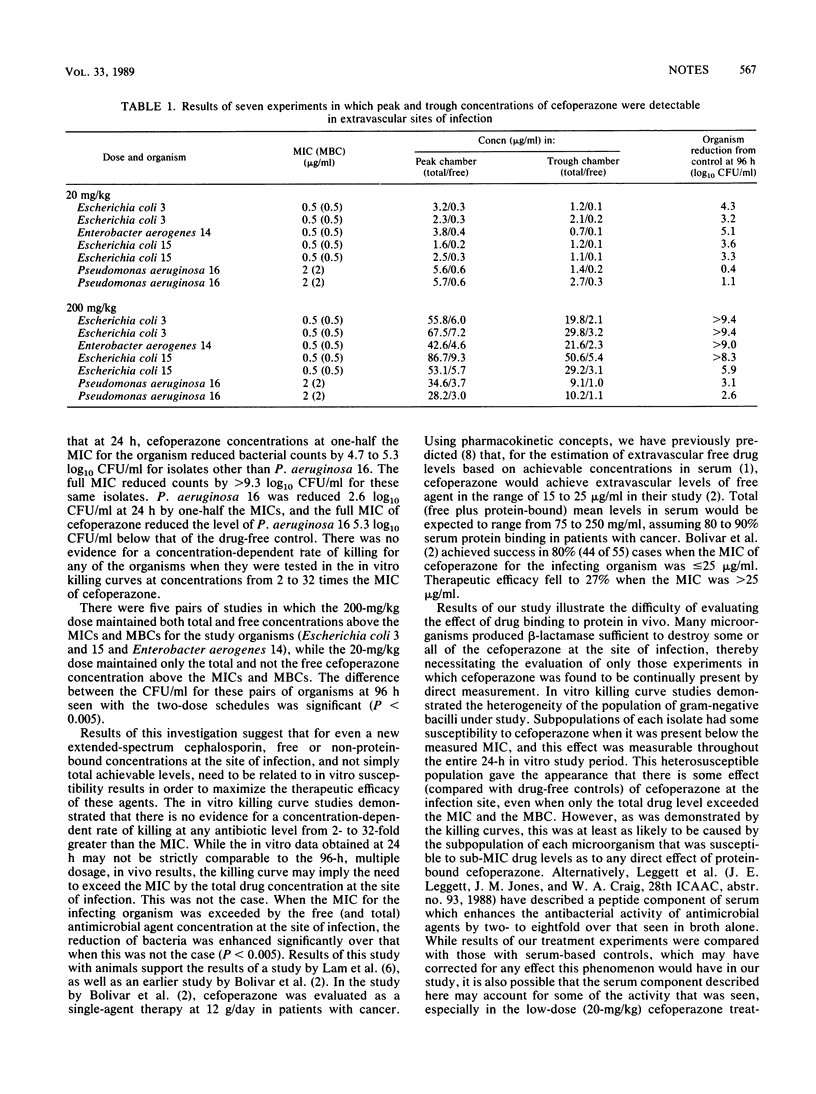Abstract
The effect of protein binding of cefoperazone (89.3% bound to rabbit serum) on antibacterial activity in serum was tested in a model that simulated a closed-space infection in a neutropenic host. Four gram-negative bacilli were tested in the model with cefoperazone doses of 20 and 200 mg/kg administered intramuscularly every 6 h for 16 doses. Cefoperazone efficacy was measured at 92 h by determining the log10 decrease in bacterial count from that of the control for five paired studies with three isolates. A significantly better response was demonstrated when the free (non-protein-bound) drug concentration exceeded the MICs and MBCs for the infecting microorganisms at the infection site at all times (P less than 0.005). This supports the concept that free (unbound) drug is the active component in treating bacterial infections.
Full text
PDF


Selected References
These references are in PubMed. This may not be the complete list of references from this article.
- Drusano G. L. Role of pharmacokinetics in the outcome of infections. Antimicrob Agents Chemother. 1988 Mar;32(3):289–297. doi: 10.1128/aac.32.3.289. [DOI] [PMC free article] [PubMed] [Google Scholar]
- Gerding D. N., Peterson L. R., Moody J. A., Fasching C. E. Mezlocillin, ceftizoxime, and amikacin alone and in combination against six Enterobacteriaceae in a neutropenic site in rabbits. J Antimicrob Chemother. 1985 Jan;15 (Suppl A):207–219. doi: 10.1093/jac/15.suppl_a.207. [DOI] [PubMed] [Google Scholar]
- Lam Y. W., Duroux M. H., Gambertoglio J. G., Barriere S. L., Guglielmo B. J. Effect of protein binding on serum bactericidal activities of ceftazidime and cefoperazone in healthy volunteers. Antimicrob Agents Chemother. 1988 Mar;32(3):298–302. doi: 10.1128/aac.32.3.298. [DOI] [PMC free article] [PubMed] [Google Scholar]
- O'Brien P. C., Shampo M. A. Statistics for clinicians. 6. Comparing two samples (the two-sample t test). Mayo Clin Proc. 1981 Jun;56(6):393–394. [PubMed] [Google Scholar]
- Peterson L. R., Gerding D. N. Influence of protein binding of antibiotics on serum pharmacokinetics and extravascular penetration: clinically useful concepts. Rev Infect Dis. 1980 May-Jun;2(3):340–348. doi: 10.1093/clinids/2.3.340. [DOI] [PubMed] [Google Scholar]
- Peterson L. R., Gerding D. N., Moody J. A., Fasching C. E. Comparison of azlocillin, ceftizoxime, cefoxitin, and amikacin alone and in combination against Pseudomonas aeruginosa in a neutropenic-site rabbit model. Antimicrob Agents Chemother. 1984 May;25(5):545–552. doi: 10.1128/aac.25.5.545. [DOI] [PMC free article] [PubMed] [Google Scholar]
- Peterson L. R., Hall W. H., Zinneman H. H., Gerding D. N. Standardization of a preparative ultracentrifuge method for quantitative determination or protein binding of seven antibiotics. J Infect Dis. 1977 Dec;136(6):778–783. doi: 10.1093/infdis/136.6.778. [DOI] [PubMed] [Google Scholar]


